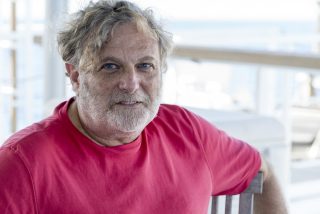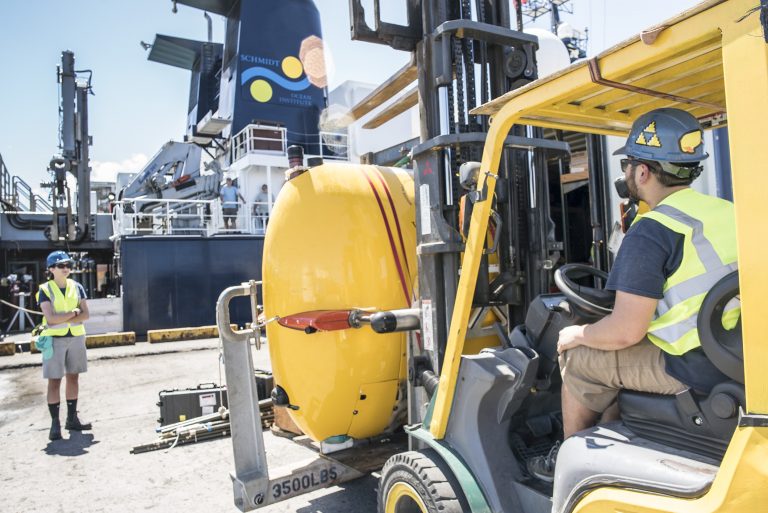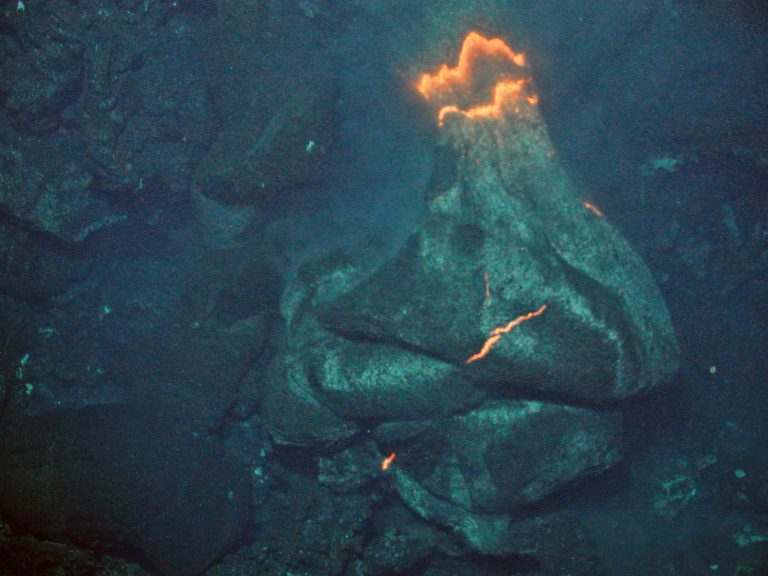
At an early age, when his peers were interested in dinosaurs or stars, Dr. Ken Rubin was thinking about volcanoes. Years later, most of the kids of his generation had moved to other interests, but he remained under the spell of fiery mountains. “Volcanoes are very cool. They really are. Eruptions are exciting, they’re interesting, but they’re also dangerous and deserve our respect,” says Dr. Rubin, a geologist, geophysicist, and of course; a volcanologist in charge of Falkor’s Underwater Fire expedition. He adds: “A fact that many people don’t know is that most of the volcanic activity in the planet occurs in the oceans, not on land”
For a period of five weeks, Falkor will take a team of multidisciplinary experts to the Northern waters of the Kingdom of Tonga, where they will explore and study a closely distributed group of small underwater volcanoes, a mere kilometer or two apart. This will not be the first time the experts have visited the area, and they are excited to come back for more. For Dr. Rubin and his team, every visit is a worthwhile effort: “Just like any natural process, the way we learn about how it works and how long it lasts is by observing it over a period of time. We go back to the same place and we look at what’s happening, we measure it, we determine how biological communities have changed, we analyze the chemistry and temperature of the water, and check if the location of chimneys has changed. When we put it together all of that information, we’re able to interpret why we see what we see on an individual visit. Otherwise we might get the impression that it’s always that way, and it probably isn’t.”
It Takes a Village
It is not just the study of volcanic activity which keeps pulling the experts back to Tongan waters, but also the quest to understand how the place itself works. Its unique characteristics call forth particular and distinct questions, which is why this is not a single-person job. The multidisciplinary team of geologists, volcanologist, biologists, hydrothermal chemists and ocean water chemists on Falkor will study the area from several angles, within a primarily geophysical tectonic framework.

Start with the tectonics of the area: two of the plates that make the surface of the Earth meet here, moving very quickly. One of them – the Pacific plate – is the fastest on our planet. Next to it, a smaller microplate is spreading apart and rotating, which is causing it to break. Such conditions, the scientists believe, contribute to much more active volcanism than normal. The oceanic crust is literally being ripped apart, the edge pulling down, wrinkling and ripping, allowing a plethora of simultaneous volcanic activities to take place.
Then there is the issue of the distribution of the volcanoes themselves. There are two places where you can expect to find volcanoes: at the edges of plates, or on very unusual locations at the center of plates, like Hawaii. Volcanoes can indeed be found at the edge here in Tonga, but they also spread out across the plate. However they do so randomly, not in a discrete way like in Hawaii. This has not been observed anywhere else on our planet.
Next, the kind of magma found here is interesting. In previous work in this area, the team discovered an unusual type of magma being erupted – one which had not been seen before in the modern planet. They discovered the presence of boninite – a rock with a chemical composition so unlikely it sounds impossible, and it can only be found in a couple other places on the planet. Dr. Rubin believes boninite forms in a several locationss but goes undetected. That is another opportunity that the Mata Volcano group offers: it sits at the edge of a fast, rotating and ripping plate, which allows relatively small pockets of the unusual magma to come out.

Finally, the biological communities: “One of the things we learned is that the organisms that live in these hydrothermal vents are quite different from those we see at hydrothermal systems that are part of the mid-ocean ridge, where the volcanoes are long and continuous. We think this is due to a combination of the isolation of the volcanoes and the frequent punctuated events – such as eruptions, faulting or landslides – that disrupt the communities,” shares Dr Rubin. Understanding the differences in communities from site to site, why they are different and how long it takes for those differences to develop, will allow the experts to piece together the link between volcanism and seafloor ecology.
Keep Asking
When presented with the question of why to keep studying volcanoes, Dr. Ken Rubin seems to channel the little boy who first fell in love with volcanoes and smiles. He answers with an incontestable fact: we still cannot predict volcanic eruptions. Nor can we predict earthquakes, landslides or tsunamis, all geophysical events that potentially pose great dangers for humanity.
Today, the team on R/V Falkor sails determined to advance our knowledge about these questions, thus helping us understand one of the fundamental processes of our ever-changing planet: volcanism.

